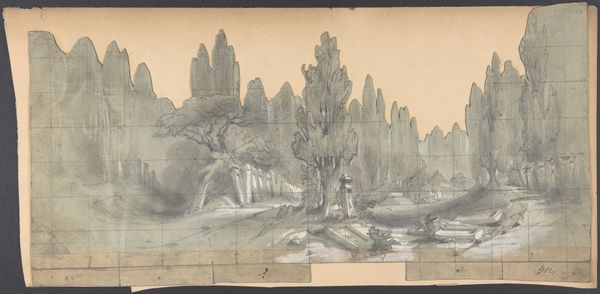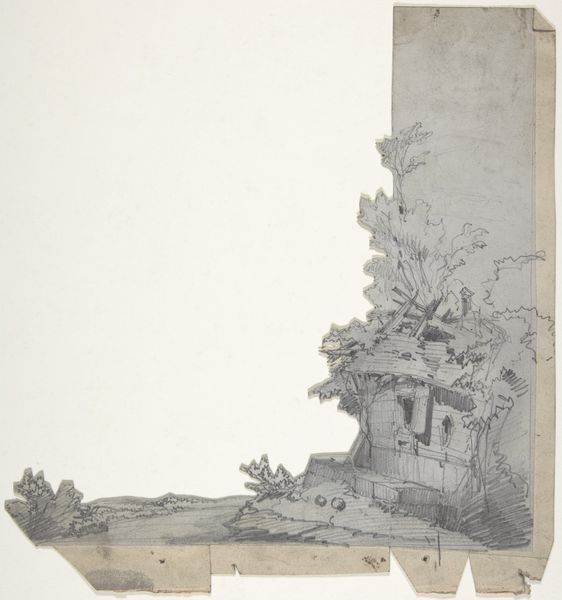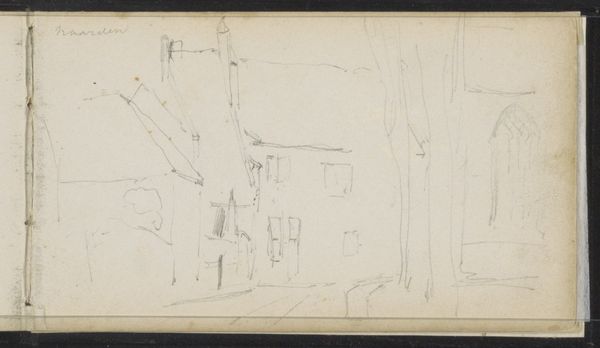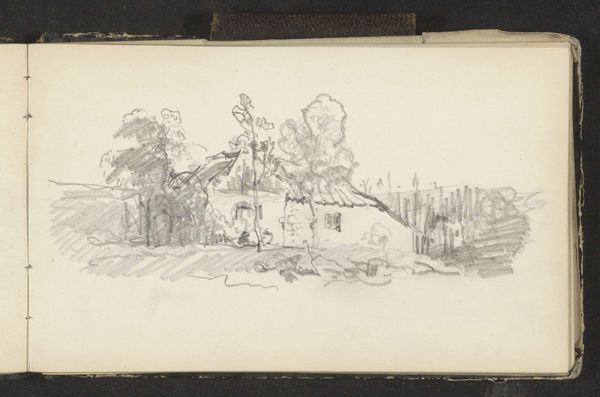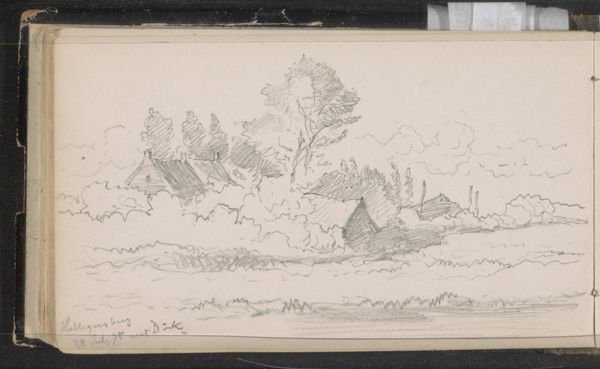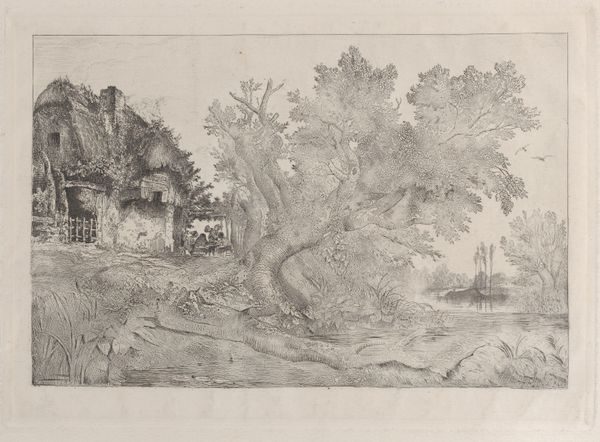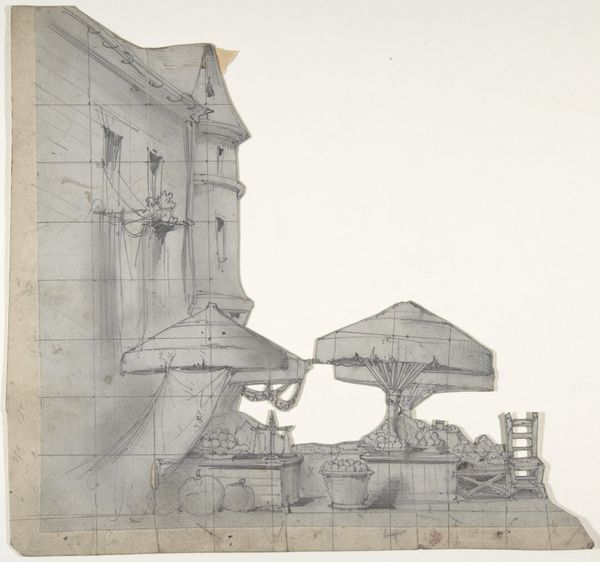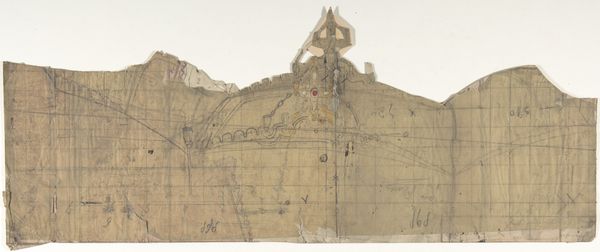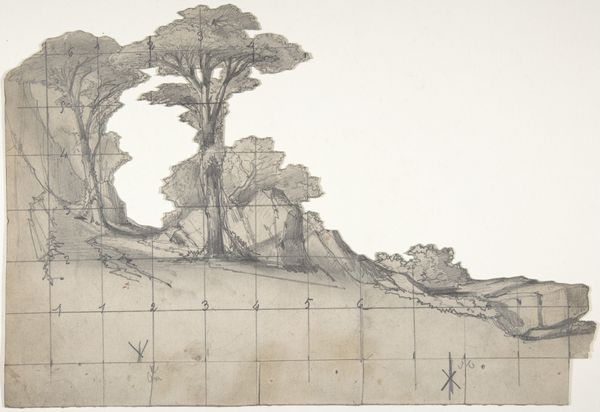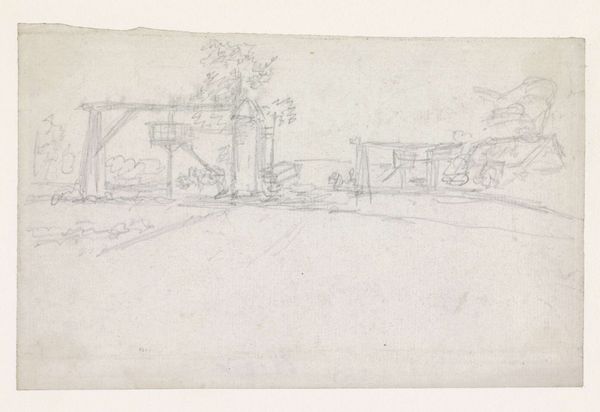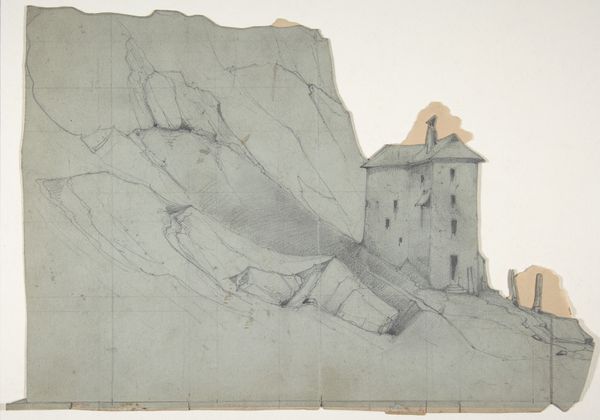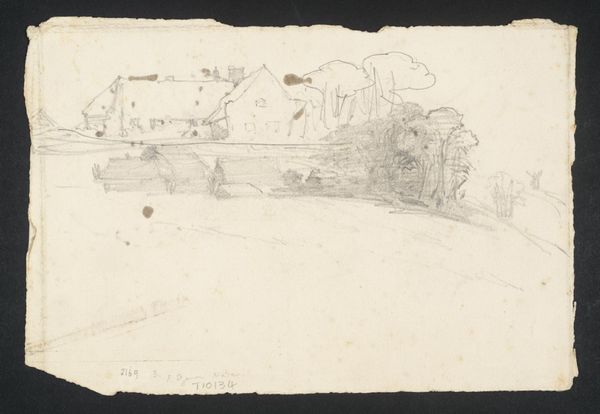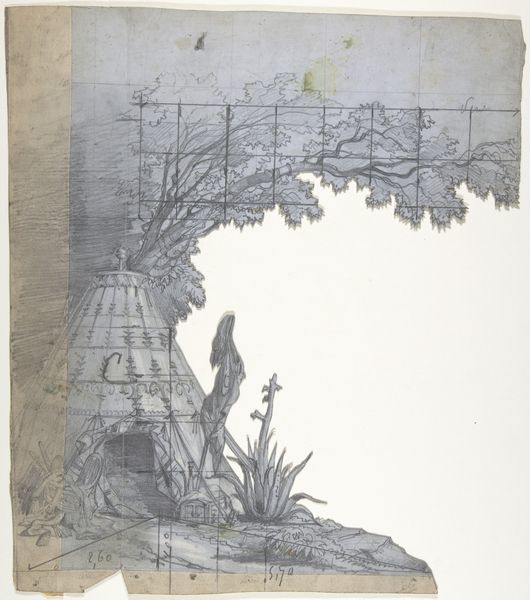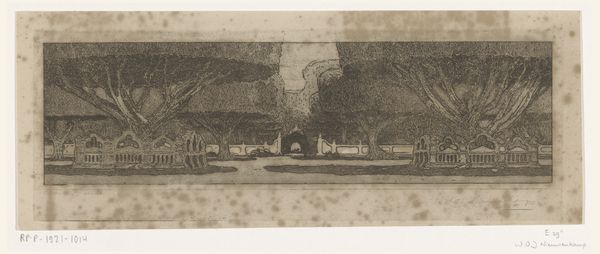
drawing, print, paper, watercolor, pencil
#
drawing
# print
#
pencil sketch
#
landscape
#
paper
#
watercolor
#
pencil
#
watercolour illustration
#
watercolor
Copyright: Public Domain
Curator: This evocative stage set design is by Eugène Cicéri, dating from around 1830 to 1890, currently held at The Metropolitan Museum of Art. He employed watercolor, pencil and print on paper. Editor: There’s a certain serenity to this drawing, almost melancholic. The soft lines and muted colors create this really tranquil waterside village. It gives off a pastoral feeling even. Curator: Absolutely. Cicéri's stage designs frequently invoke a romantic ideal of rural life, tapping into broader 19th-century notions of longing for a simpler existence in the face of increasing industrialization. These landscapes serve not just as backdrops, but reflect desires linked to societal changes. Editor: Seeing how it’s pieced together really shifts my focus. You can see how the paper has been sectioned to assemble a complete scene; you begin to recognize it as the outcome of industrial reproduction to be put on display as theater. What do you make of that layering? Curator: Those material aspects also speak to the period. With Cicéri, we see an embrace of the picturesque interwoven with developing industrial methods. The piece captures a society grappling with new technologies while yearning for past ideals, which gives it complexity that isn’t only pictorial. Editor: It feels inherently provisional; all of the seams show, the materiality betrays any illusions, yet in that lies an artistic intention of display for labor, almost as a form of production instead of artistic creation, per se. I wonder about his intended audiences too. Curator: Certainly, it is vital to think of the audience within specific cultural contexts, how set designs, or theatre at the time would communicate ideals and impact societal perceptions of landscapes and culture. The work then serves as both artifact and message. Editor: Indeed, I am left appreciating how such unassuming material choices can radically redefine the aesthetic and even ideological function of stage design. It goes to show the capacity of design to shape and reframe cultural meaning. Curator: By delving into these intersections we come to understand Cicéri's design as much more than a scene: It is, in many ways, a mirror reflecting complex aspects of the 19th-century experience.
Comments
No comments
Be the first to comment and join the conversation on the ultimate creative platform.
